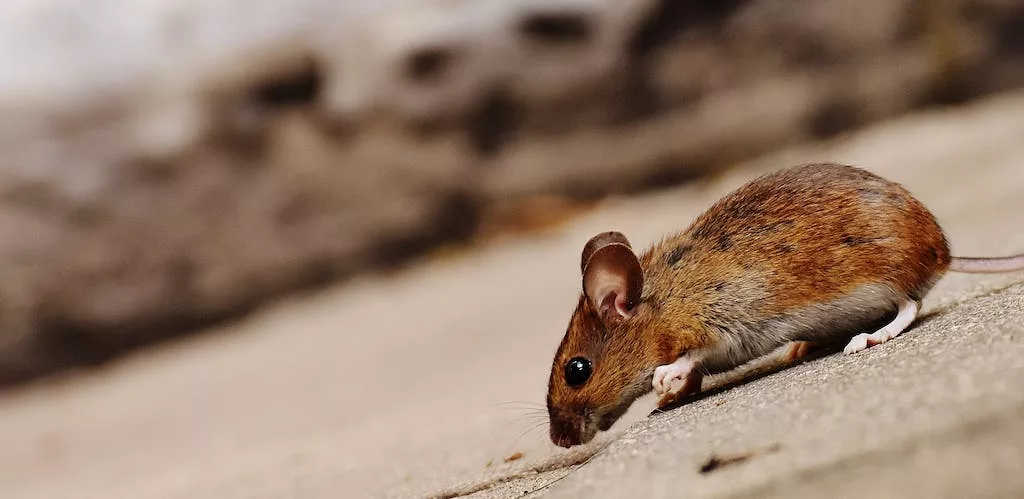More homeowners are turning to DIY pest control solutions to quickly deal with a wide range of common pest problems. From roaches and flies to ants and termites, there always seems to be a pest problem that needs to be dealt with inside or outside your home. Thanks to the DIY trend, you no longer have to wait for a professional exterminator to come and solve pest issues for you. However, it’s important to note that some hidden dangers lurk with DIY pest control, often overlooked by enthusiastic homeowners. Without adequate knowledge, these hazards can be detrimental to our health and our broader environment.
That’s why it’s so critical to consider the effectiveness, safety, and potential impacts of going DIY. Unintentional misuse of chemicals, exposure to harmful substances, inadequate safety measures, potential long-term health implications, and unforeseen environmental consequences are just some of the hazards that can manifest when pest control is handled without proper application and care. In this article, we’ll be delving deeper into these DIY hazards and providing insights to guide homeowners to make informed, health-conscious decisions regarding pest control.
The Appeal of DIY Pest Control
Homeowners worldwide are gravitating towards cost-effective and efficient solutions, and this trend extends to home maintenance, including pest control. The popularity of DIY pest control can be attributed to three primary factors:
- Cost-effectiveness: DIY pest control offers a significant cost advantage over hiring professional services. Given today’s economic climate, the prospect of tackling pest issues without a hefty service fee is attracting more DIY pest control enthusiasts.
- Convenience and Immediate Action: The convenience of DIY methods, allowing for instant action as soon as a pest problem arises, is another appeal. No more waiting for professional availability—homeowners can take control immediately, offering peace of mind.
- Wide Availability of Products: There is a diverse array of pest control products, ranging from traps to aerosol sprays, insecticide concentrates, and fogging, catering to different types of infestations. Their wide availability online further reinforces the attractiveness of DIY pest control.
Potential Health Hazards of DIY Pest Control
Despite the benefits of DIY pest control solutions, there are some drawbacks. A critical aspect often overlooked is the potential health hazards that can result from mishandling pest control treatments. These hazards stem from a lack of professional knowledge, improper usage, and unawareness of necessary safety measures. Here’s what you should keep in mind:
- Misuse and Overuse of Chemicals: Precision and expertise are vital when it comes to using chemicals. Due to a lack of professional training or the failure to follow application instructions, DIY enthusiasts may misuse or overuse pest control chemicals. This imprecise application can lead to excess toxins in the home environment, posing a health risk for all inhabitants. More is not necessarily better; excessive use of chemicals can increase toxicity levels, heightening the potential harm.
- Exposure to Harmful Substances: Pest control products often contain substances that can be harmful if improperly handled. For instance, organophosphates and carbamates, commonly found in various pesticides, can be harmful or even lethal in high doses. Direct exposure to such substances can cause immediate health problems such as skin and eye irritation, nausea, headaches, dizziness, and in severe cases, seizures. Long-term exposure can lead to more severe health problems like respiratory issues, skin diseases, and even certain types of cancer.
- Lack of Proper Safety Measures: Without the benefit of professional training, homeowners may neglect crucial safety measures while handling pest control products. Simple but essential procedures like wearing protective clothing, using gloves, and ensuring adequate ventilation in the treated area may be overlooked. These oversights can increase direct exposure to harmful chemicals, amplifying health risks.
- Long-Term Health Implications: The health implications of DIY pest control are not limited to immediate effects. Long-term or continuous exposure to certain pesticides can have chronic impacts on health. Some pesticides have been linked to neurological problems, endocrine disruption, and reproductive health issues. The potential for such significant health problems underscores the importance of using these substances judiciously and under professional guidance wherever possible.
- Allergic Reactions: Individual sensitivities can also come into play. Some individuals may experience allergic reactions to certain pest control products. These reactions can range from mild skin rashes or eye irritation to more severe reactions like respiratory distress. While such reactions can be unpredictable, they add another layer of risk to the DIY pest control equation.
Environmental Consequences of DIY Pest Control
The risks associated with DIY pest control extend beyond immediate health implications. They also pose substantial threats to our environment. The environmental impact of pest control substances, particularly when misused or overused, is a topic of growing concern.
- Impact of Pesticides on Soil and Water: The inappropriate or excessive use of pesticides can lead to significant environmental contamination. Pesticides can infiltrate the soil, causing contamination that affects soil health and can lead to a broader ripple effect on local ecosystems. Pesticide residues can leach into groundwater or run off into water bodies, resulting in water pollution. This contamination can harm aquatic life and even make its way up the food chain, potentially impacting human health through the consumption of contaminated food and water.
- Disruption to Non-Target Species and Biodiversity: Another serious environmental concern is the impact of pesticides on non-target species and overall biodiversity. Pesticides, especially when incorrectly applied, don’t just affect the pests they’re intended to control; they can also harm other wildlife, including beneficial insects and birds. This unintended collateral damage can disrupt local ecosystems, disturbing the balance of species and damaging biodiversity. It’s important to remember that every creature, no matter how small, plays a crucial role in the larger ecosystem.
- Pesticide Resistance: Overusing or misusing pesticides can also lead to another environmental concern: pesticide resistance. Much like bacteria can become resistant to antibiotics, pests can develop resistance to pesticides. This resistance occurs when pests survive exposure to pesticides and pass on their resistant traits to their offspring. Over time, this can result in populations of pests that are increasingly tough to control, leading to the need for more potent pesticides or higher doses, thereby escalating the environmental impact.
Understanding these impacts underlines the importance of responsible pesticide use and the necessity of implementing sustainable pest management strategies.
Direct Impacts on Household Safety
The potential hazards of DIY pest control also involve immediate and direct impacts on household safety. These risks include a broad spectrum, ranging from direct harm to family members and pets to property damage and psychological stress.
- Risks to Children and Pets: Pesticides, if not handled and stored properly, can pose severe risks to the most vulnerable members of the household – children and pets. Curious by nature, they may accidentally ingest pesticides or come into direct contact with recently treated areas. This can result in immediate health issues, ranging from skin irritations to more serious conditions like poisoning. Children, in particular, due to their smaller size and ongoing development, can be more susceptible to the harmful effects of pesticides than adults.
- Possible Property Damage: DIY pest control efforts can sometimes backfire and result in damage to your property. Misuse of pest control solutions can cause stains on furniture, carpets, or clothing. Some chemicals can also cause corrosion of certain materials, leading to potential structural damage. In more extreme cases, faulty or improper use of pest control equipment can even cause physical damage like fires or explosions, underlining the importance of careful product handling and usage.
- The Anxiety and Stress of Unresolved Pest Problems: The psychological impact of pest infestations is another concern. DIY pest control efforts can often lead to unresolved or recurring pest issues, especially in cases of significant infestations. This continued pest presence can cause significant anxiety and stress for homeowners, who must constantly live with the discomfort and worry of the infestation. Over time, this anxiety can impact overall well-being and quality of life.
Practical Tips for Safer DIY Pest Control
Even with the acknowledged potential risks, DIY pest control remains a popular choice for many homeowners. If you decide to go DIY, it’s essential to do so with proper caution and preparation. Here are some practical tips to ensure safer DIY pest control:
- Use Safety Equipment and Follow Product Instructions: First and foremost, always prioritize safety. This includes wearing appropriate protective clothing—gloves, goggles, and sometimes even a mask or respirator—depending on the product you’re using. Ensure to follow the product’s instructions carefully. These instructions are not just guidelines but are designed to maximize effectiveness and minimize potential harm. This includes specific directions about ventilation, wait times before re-entry into treated areas, and precautions to keep children and pets safe. Ignoring these instructions can increase the risk of exposure to harmful substances.
- Opt for Eco-Friendly and Approved Products: When selecting products, consider opting for eco-friendly pest control solutions approved by relevant authorities. Eco-friendly products tend to contain fewer harmful chemicals, reducing the potential health risks and environmental impact. Approved products have been tested and deemed safe for use by regulatory bodies, providing additional assurance of their safety and efficacy. Keep in mind that not all pest control solutions are created equal, so take the time to research and choose wisely.
- Know When to Seek Professional Help: You should also recognize the limitations of DIY pest control. Some infestations—such as termites, bed bugs, or extensive rodent infestations—may be beyond the scope of DIY measures. If you’re dealing with persistent pests despite your efforts, or if the pest in question carries significant health risks, it’s time to call in the professionals. They have the expertise and tools to effectively handle complex infestations. The goal is to eliminate the pest problem while preserving the health and safety of your household and environment—a balance that they’re trained to achieve.
Be Safe
As you navigate your pest control journey, remember that pest issues are multifaceted problems that demand comprehensive solutions. Pest control is not just about eliminating nuisances. It’s also about preserving your health, your household’s well-being, and our environment’s integrity. The key is finding a balance between immediate pest control needs and long-term safety and environmental concerns. Whether you decide to take the DIY route or seek professional help, always prioritize the well-being of your household and our planet. Your careful and informed choices will not only result in a pest-free home but also contribute to a healthier, safer world.


